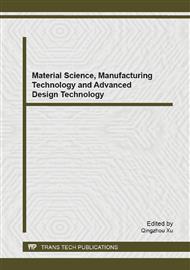p.269
p.277
p.282
p.287
p.292
p.296
p.302
p.306
p.311
The Technical Development for Increasing ROP with Particle Impact Drilling in China
Abstract:
Field test of particle impact drilling (PID) technology was firstly carried out in deep well and hard formation in Sichuan province china on Oct. 2013. The test formation was named Xu Jiahe, which was very difficult to penetration. Field test result shows that the ROP (rate of penetration) was nearly doubled by this technology. It indicates that there is a profound application prospect of particle impact drilling, especially for hard rock formation. In this paper, the equipment and working principle was analyzed. The experiment and simulation results showed that the rock breaking efficiency was highly increased by this technology. The details of this field test were presented too in this paper that proved the sound effect of PID.
Info:
Periodical:
Pages:
292-295
Citation:
Online since:
March 2014
Price:
Сopyright:
© 2014 Trans Tech Publications Ltd. All Rights Reserved
Share:
Citation:


